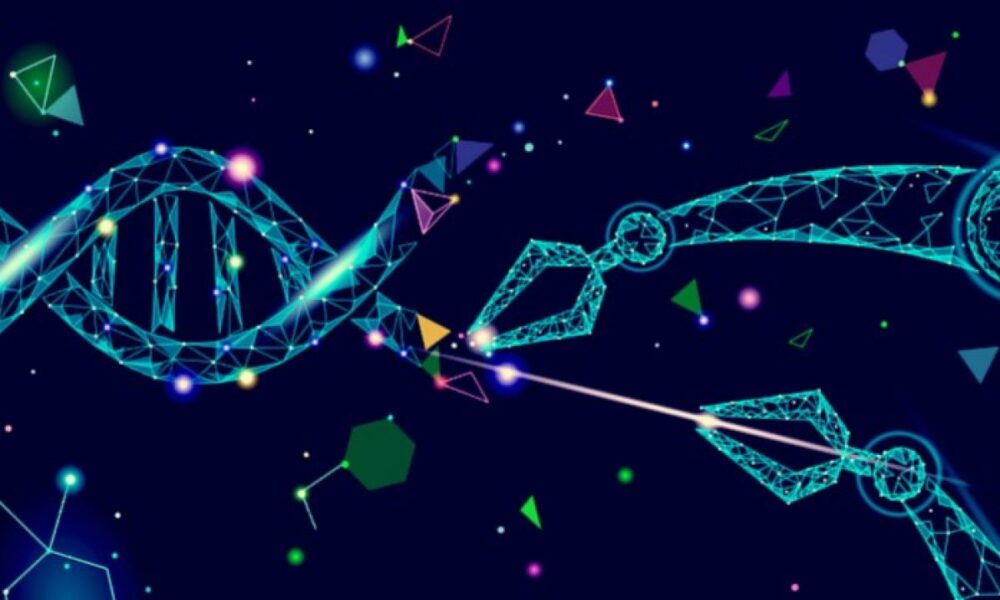Bacteria get a bad rap, and often deservedly so: Different strains cause a range of infections and diseases, including pneumonia, strep throat, and tuberculosis. However, any well-researched health food advocate can list the many benefits of the bacteria present in yogurt, and your local pub would be doomed without the strains integral to crafting their signature brews. What might be even more surprising is that a recent, revolutionary gene-editing technology, once exclusively the subject of science fiction, is based on the bacterial genome.
Bacteria and archaea, the original hosts of the CRISPR-Cas9 system, use this DNA-protein system to defend themselves from viruses. CRISPRs are DNA sequences that repeat in the genome of a bacterium, interspersed with fragments of genetic code from past viral invaders. When a virus enters a bacterial cell, the remnants of that same virus held in the bacteria’s DNA help identify and eliminate the virus. Once a virus is identified by a bacterium, Cas9 proteins try to figure out whether the new viral intruder matches any of the genetic information contained in the CRISPRs’ sequences of their DNA. If the virus matches the stored genetic information, the Cas9 protein will cleave it into pieces.
In 2011, researchers, including Nobel laureates Jennifer Doudna and Emmanuelle Charpentier, discovered that Cas9 proteins can be used to cut genomes that do not contain viral information, inspiring a plethora of research projects that have widened the scope of biotechnological possibility.
One such project is spearheaded by Daniel Sapozhnikov, a PhD candidate in the Department of Pharmacology and Therapeutics at McGill, and Moshe Szyf, a professor in the same department. The project aims to develop a way to remove methyl groups—one carbon atom bonded to three hydrogens—from genes. Many diseases and disorders are dependent on whether specific genes are expressed, or “turned on.” Since varying amounts of methylation are associated with whether or not a gene is active, then being able to remove methyl groups could have important consequences for gene manipulation in scientific studies.
“Since the 1980s, it’s been shown that […] genes with less [methylation] tend to be expressed [more] and genes with more tend to be expressed [less],” Sapozhnikov said in an interview with The McGill Tribune. “That’s basically the same conclusion that we have been stuck with in 2020. Without the ability to manipulate the DNA methylation levels at specific genes, there is really not much causational evidence for how DNA methylation and gene expression interact.”
In order to better understand the relationship between methylation and gene expression, Sapozhnikov and Szyf developed a technique to demethylate select regions of a cell’s DNA.
CRISPR-Cas9 plays an integral role in the demethylation technique developed by Sapozhnikov and Szyf. By using guide RNA and Cas9 to block the methylation of genes, the effect of DNA demethylation can be evaluated in different cases. The specific system of CRISPR-Cas9 the team used is known as dCas9, which is CRISPR-Cas9 with a modified protein that prevents the cutting of DNA—a potentially lethal consequence—while retaining the important function of gene targeting. Once the dCas9 protein reaches the desired target of a genome, it binds to the site, preventing methylation of whatever it is attached to by physically blocking the process.
Although other teams have developed techniques for demethylation, Sapozhnikov believes that their method is the most exact.
“There have been other tools that have been made that do similar things, but we argue that our tool is better from a causational perspective because […] it has fewer other activities,” Sapozhnikov said.
The technique developed by Sapozhnikov and Szyf only works to remove methyl groups. Understanding the correlation between demethylation and gene expression could help the development of therapies to treat the numerous problems that arise from the improper functioning of gene expression.
CRISPR-Cas9 is still a very new technology, and it can often have unforeseen consequences in the cells it is used on—not to mention the ethical concerns raised by editing someone’s DNA, which is a topic of heavy debate and even outrage amongst the scientific community. Despite the many unanswered questions, CRISPR-Cas9 represents an incredible step toward revolutionary gene therapy, and with research like that of Sapozhnikov and Szyf, important new uses will continue to be explored.








